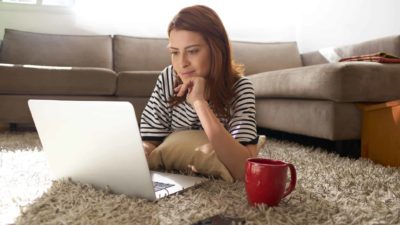When it comes to investing in ASX shares, the dollar-cost averaging strategy is one that works well for many investors.
The point of this strategy is to take the anxiety of trying to time the market out of the equation. We know that markets tend to rise over time, as illustrated below:
Thus, if you consistently put your extra cash into an index fund at set intervals, you will be able to harness this compounding phenomenon without too much worry.
Sure, you won't be 'buying low and selling high' like we're all told to do. But behavioural economics tells us that we're usually pretty bad at doing this anyway, so why bother with all of that stress?
So if you steadily drip-feed a $400-a-month investment into the markets using a dollar-cost averaging strategy, how long will it take to get to a million-dollar portfolio?
Well, $400 a month is roughly $100 a week, or $4,800 a year.
How far will investing $400 a month into ASX shares get you?
Let's say we start with a $4,800 lump sum after a year of hard saving and go from there. So if you just put the cash under the mattress, you'd have $48,000 after a further nine years.
But say we invested that money into an ASX index fund instead. The SPDR AS&P/ASX 200 Fund (ASX: STW) is one of the oldest index funds on the ASX.
It has been around since 2001 and, over this period, has returned an average of 8.01% per annum. That assumes any dividends received are reinvested, of course.
At that rate of return, our $4,800 per year investment would have turned into $82,459 after a decade. That's close to double what we would have had if we left the cash under the mattress.
But how long would it take to get to the magic mil?
Well, if an investor consistently got that 8.01% return every year, and kept investing $400 per month, said investor would be a millionaire after 34 years.
Now that's a long time, to be sure. But it does mean that someone who got started investing when they were 18 with just $400 a month could reach million-dollar portfolio status by the time they hit 52.
If a lucky couple shacks up at 18 and both manage to execute this strategy, that could be a very early retirement on the cards.
Like all good investment strategies, this is not a get-rich-quick kind of plan. But it does show how investing in shares can make a meaningful difference to one's wealth (and, potentially, retirement) if applied consistently.








